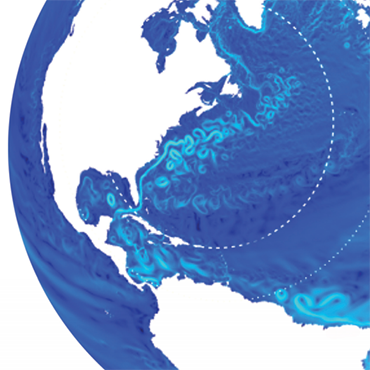National labs go big on climate modeling

Eight national laboratories will team with other institutions to develop new climate and Earth system models.

The Energy Department's high-performance computing prodigies are pooling their number-crunching capabilities to provide what they hope will be the most complete climate and Earth system models to date.
Among those models would be the first fully coupled global simulation to include dynamic ice shelf/ocean interactions that could help explain potential instabilities of the marine ice sheets around Antarctica, according to officials at Lawrence Livermore National Laboratory, one of the labs involved in the project.
The Accelerated Climate Modeling for Energy (ACME) project is sponsored by the Earth System Modeling program in DOE’s Office of Biological and Environmental Research, with initial funding provided by the Office of Science.
Eight national laboratories -- Lawrence Livermore, Argonne, Brookhaven, Lawrence Berkeley, Los Alamos, Oak Ridge, Pacific Northwest and Sandia -- will work with the National Center for Atmospheric Research, four academic institutions and a private-sector company on the effort.
The group of labs called ACME's work unprecedented in its scope and its harnessing of DOE's high-performance computing assets.
Officials at Lawrence Livermore said that during ACME's planned 10-year lifespan, the labs will conduct simulations and modeling on the most sophisticated machines as they become available. Lab officials have their eyes on 100-plus petaflop machines and, eventually, exascale supercomputers. Exascale systems are capable of 1,000 petaflops, or 1 quintillion floating-point operations/sec. Some industry experts have predicted that the first exascale systems will come online in 2018.
The team will initially use the Office of Science's Leadership Computing Facilities at Oak Ridge and Argonne national laboratories.
Those two facilities house some of the world's most powerful supercomputers. Oak Ridge is home to Titan, a Cray XK7 capable of about 20,000 trillion calculations a second -- or 20 petaflops. Argonne recently added an IBM Blue Gene/Q that researchers nicknamed Mira. According to Argonne, Mira has 48 racks and 786,432 processors and weighs in at 104 tons. It has a theoretical peak of 10 petaflops (10 quadrillion floating-point operations/sec).
ACME's initial focus will be three climate change science drivers: the water cycle, biogeochemistry and cryosphere systems.
"The grand challenge simulations are not yet possible with current model and computing capabilities," said David Bader, an atmospheric scientist at Lawrence Livermore and chairman of the ACME council, in the lab's press release. "But we developed a set of achievable experiments that make major advances toward answering the grand challenge questions using a modeling system, which we can construct to run on leading computing architectures over the next three years."
NEXT STORY: So What Exactly Is a 'Killer Robot'?





